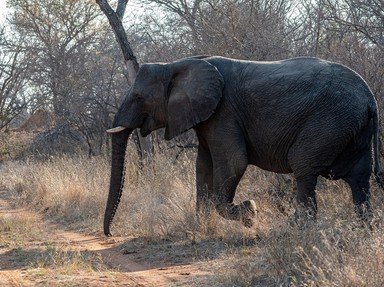Quiz Answer Key and Fun Facts
1. What reduces the weight of the elephant's skull?
2. Which of the following statements is true about the elephant's trunk?
3. Elephants' ears have few blood vessels.
4. What role does the pharyngeal pouch play in an elephant's body?
5. Elephant tusks are primarily made up of which of the following?
6. Why do elephants have internal testes?
7. Why is elephant skin heavily folded?
8. Which of the following forms of legs helps elephants support their heavy weight on land?
9. What advantage does the double-apex structure of an elephant's heart provide?
10. What is the function of the secretions from the temporal gland in elephants?
Source: Author
Popramah3
This quiz was reviewed by FunTrivia editor
rossian before going online.
Any errors found in FunTrivia content are routinely corrected through our feedback system.
